Dodge Journey: Description
MANUAL TEMPERATURE CONTROL (MTC) SINGLE ZONE
The A/C-heater control for the front Manual Temperature Control (MTC) single zone system allows one temperature setting for the entire vehicle. All controls are identified by ISO graphic symbols.
The heating-A/C system uses a dedicated miroprocessor to drive the electrically operated door actuators. This control provides the vehicle operator with a number of setting options to help control the climate and comfort within the vehicle.
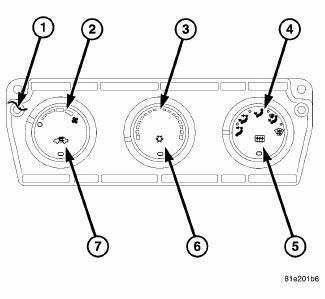
Fig. 19: Front Manual Temperature Control AC Heater Control
The A/C-heater control (1) is located in the instrument panel and contains:
- a rotary control for blower motor speed selection, and to turn the blower motor off (2).
- a rotary control for temperature control of the discharged air (3).
- a rotary control for mode control of the discharged air (4).
- a push-button control with an indicator lamp to turn the rear window defogger system on and off (5).
- a push-button control with an indicator lamp to turn the A/C system on and off (6).
- a push-button control with an indicator lamp for recirculation control of the discharged air (7).
The A/C-heater control for the MTC heating and A/C system and is diagnosed using a scan tool. Prior to replacing an A/C-heater control, check for any Diagnostic Trouble Codes (DTCs) related to the heating- A/C system, and run the calibration procedure to verify that the concern is not an air-door calibration issue.
The A/C-heater control cannot be adjusted or repaired and must be replaced if inoperative or damaged.
AUTOMATIC TEMPERATURE CONTROL (ATC) DUAL ZONE
The A/C-heater control for the Automatic Temperature Control (ATC) dual zone front heating-A/C system allows both the driver and the front seat passenger the ability to individually regulate air temperature for their side of the vehicle. An infrared sensor located in the overhead console detects thermal radiation emitted by the front seat occupants and their surroundings. Based on the sensor input, the system automatically adjusts the air temperature, airflow volume, airflow distribution and amount of inside air recirculation to maintain front seat occupant comfort, even under changing outside weather conditions. All controls are identified by ISO graphic symbols.
The ATC dual zone heating-A/C system uses a dedicated miroprocessor to automatically drive the electrically operated door actuators. The ATC A/C-heater control obtains vehicle speed, engine speed, engine coolant temperature, ambient temperature and refrigerant system pressure. The ATC A/C-heater control communicates with other electrical modules in the vehicle over the Controller Area Network (CAN) IHC bus.
This ATC system provides the vehicle operator with a number of setting options to help control the climate and comfort within the vehicle and offers several manual override features such as fan speed, airflow distribution, defrost mode and when the outside air contains smoke, odors or high humidity, the interior air can be manually recirculated.
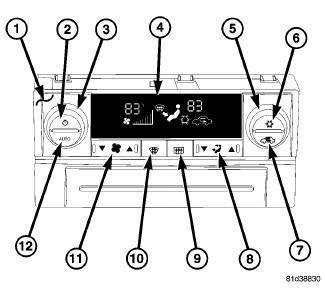
Fig. 20: Dual Zone Front ATC Control
The ATC dual zone A/C-heater control (1) is located in the instrument panel and contains:
- a push button on/off control which allows the heating-A/C system to be completely turned off (2). The Vacuum-Flourescent (VF) digital display (4) is blank when the heater-A/C system is off.
- two rotary temperature controls to select both driver and front seat passenger comfort temperatures from 15º to 29º C (60º to 85º F) (3 and 5). Comfort temperatures for each zone are shown in the VF digital display. If the set temperatures are 15º C (60º F) and is adjusted lower, the A/C-heater control will attempt to achieve the lowest temperature possible, but the display will show LO. If the set temperatures are 29º C (85º F) and is adjusted up, the A/C-heater control will attempt to achieve the highest temperature possible, but the display will show HIGH. Temperatures can be displayed in either Metric or Fahrenheit.
- a push button A/C on/off control (6). An ISO Snowflake symbol appears in the VF digital display when the A/C system is in operation, whether under manual or Auto mode.
- a push button air recirculation control to set the heating-A/C system to Recirculation mode (7). An ISO Recirculation symbol appears in the VF digital display when Recirculation mode is selected and when the system exceeds 80 percent circulated air under Auto mode (due to high A/C demand).
- a rocker switch mode control that can override the Auto mode (8). An ISO mode symbol appears in the VF digital display to indicate the current mode setting when selected manually or by Auto mode.
- a push button rear window defogger on/off control (9). An indicator lamp illuminates in the control when selected. The indicator lamp illuminates in the control even with the heating-A/C system turned off.
- a push button front window defogger control (10). An indicator lamp illuminates in the control when selected manually and an ISO symbol appears in the VF digital display when selected by auto mode.
- a rocker switch fan speed control that can override the auto mode (11). A bar graph is shown in the VF digital display to indicate the selected or determined front fan speed (depending on manual or auto mode).
- a push button automatic mode control to set the heating-A/C system to auto mode (12). AUTO appears in the VF digital display when the system is in auto mode.
- illumination lamps for backlighting of the control.
- computer logic that remembers the settings of the controls when the ignition is turned off and retains those settings after a restart. If the heating-A/C system is off when the ignition is turned off, the system will be off when the engine is restarted.
- computer logic that provides variable air recirculation under high
temperature and humidity conditions.
Because recirculation is generally accompanied by increased fan noise, the proportion of recirculated to outside air, gradually approaches full recirculation over a broad temperature range.
The front A/C-heater control utilizes integrated circuitry and information carried on the CAN IHS bus to monitor many sensors and switch inputs throughout the vehicle. In response to those inputs, the internal circuitry and programming of the A/C-heater control allows it to control the electronic functions and features of the ATC heating-A/C system.
The inputs received by the A/C-heater control of the ATC heating-A/C system are as follows:
- Refrigerant Pressure
- Evaporator Temperature
- Engine Coolant Temperature
- Ambient Air Temperature
- Infrared Temperature Sensor
- Vehicle Speed
The messages broadcasted by the A/C-heater control of the ATC heating-A/C system are as follows:
- A/C Request
- A/C Select
- Rear Window Defogger (EBL) Request
The A/C-heater control for the ATC heating and A/C system is diagnosed using a scan tool.
A/C system, and run the calibration procedure to verify that the concern is not an air-door calibration issue.
The A/C-heater control cannot be adjusted or repaired and must be replaced if inoperative or damaged. The illumination lamps for the A/C-heater control can be serviced separately.
MANUAL TEMPERATURE CONTROL (MTC) TRI ZONE
The A/C-heater controls for the Manual Temperature Control (MTC) tri-zone heating-A/C system allows the driver, front seat passenger and the intermediate seat passengers, the ability to individually regulate air temperature as well as fan speed for their portion of the vehicle. Primary controls for the rear heating-A/C system are located on the front A/C-heater control panel. All controls are identified by ISO graphic symbols.
FRONT CONTROL PANEL
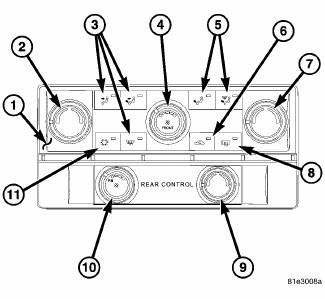
Fig. 21: Manual Temperature Control Tri Zone Front Control
The front MTC dual zone A/C-heater control and integral computer (1) is located in the instrument panel and contains:
- three rotary temperature controls (2, 7 and 9) to select the separate temperatures for both of the front comfort zones and the rear comfort zone
- five push button mode controls (3 and 5) to select the position of the discharged air for the driver and front passenger comfort zones. An indicator lamp illuminates in each of the controls when selected.
- a rotary control knob for front fan speed selection and turning the heater-A/C system off (4).
- a push button air recirculation control (6). An indicator lamp illuminates in the control when selected.
- a push button rear window defogger on/off control (8). An indicator lamp illuminates in the control when selected. The rear window defogger system operates and the indicator lamp illuminates in the control even when the heating-A/C system is turned off.
- a rotary control knob for rear fan speed selection and turning the rear heater-A/C system off (10). This control has a position for locking out the rear heater-A/C controls, allowing only the driver and front seat passenger control of the rear heating-A/C system.
- a push button A/C on/off control (11). An indicator lamp illuminates in the control when the A/C system is in operation.
- computer logic that remembers the settings of the A/C-heater control when the ignition is turned off, and retains those settings after a restart. If the heating-A/C system is off when the ignition is turned off, the system will be off when the engine is restarted.
The front A/C-heater control utilizes integrated circuitry and information carried on the Controller Area Network (CAN) IHS bus to monitor many sensors and switch inputs throughout the vehicle. In response to those inputs, the internal circuitry and programming of the A/C-heater control allows it to control the electronic functions and features of the MTC heating-A/C system.
The front A/C-heater control is diagnosed using a scan tool.
Prior to replacing an A/C-heater control, check for any Diagnostic Trouble Ccodes(DTCs) related to the heating-A/C system, and run the calibration procedure to verify that the concern is not an air-door calibration issue. The front A/C-heater control cannot be adjusted or repaired and must be replaced if inoperative or damaged.
REAR CONTROL PANEL
The rear MTC A/C-heater control is located in the headliner and allows intermediate seat passengers to adjust rear air distribution, temperature and blower motor speed when the rear heating-A/C system primary on/off control in the front A/C-heater control in the instrument panel is set to the on position and the rear heater-A/C controls are NOT locked out by the driver or front seat passenger.
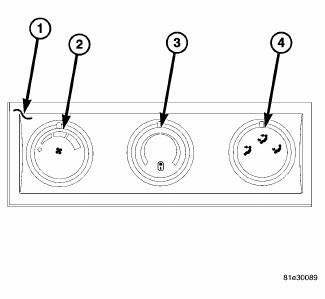
Fig. 22: Manual Temperature Control Tri Zone Rear Control
The rear A/C-heater control (1) contains:
- a rotary control knob for fan speed selection and turning the rear heating-A/C system on and off (2).
- a rotary control knob for temperature control of the rear discharged air (3). An indicator lamp illuminates in the control when the rear heater-A/C controls are locked out by the driver or front seat passenger.
- a rotary control knob for mode control of the rear discharged air (4).
The rear A/C-heater control is a slave potentiometer to the front A/C-heater control and cannot be adjusted or repaired and must be replaced if inoperative or damaged.
AUTOMATIC TEMPERATURE CONTROL (ATC) TRI ZONE
The A/C-heater controls for the Automatic Temperature Control (ATC) tri-zone heating-A/C system allows the driver, font seat passenger and the intermediate seat passengers the ability to individually regulate the air temperature for their portion of the vehicle automatically. Primary controls for the rear are located on the front A/C-heater control panel. All controls are identified by ISO graphic symbols.
FRONT CONTROL PANEL
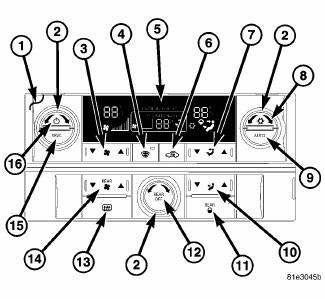
Fig. 23: ATC Tri Zone Front Control
The front A/C-heater control (1) and integral computer is located in the instrument panel and contains:
- three rotary temperature controls (2) to select both of the front and the rear comfort temperatures from 15º to 29º C (60º to 85º F). Comfort temperatures for each zone are shown in the Vacuum-Flourescent (VF) digital display (5). If the set temperatures are 15º C (60º F) and is adjusted lower, the A/C-heater control will attempt to achieve the lowest temperature possible, but the display will show LO. If the set temperatures are 29º C (85º F) and is adjusted up, the A/C-heater control will attempt to achieve the highest temperature possible, but the display will show HIGH. Temperatures can be displayed in either Metric or Fahrenheit, which is selected from the overhead console.
- a rocker switch front fan speed control (3) that can override the Auto mode. A bar graph is shown in the VF digital display to indicate the selected or determined front fan speed (depending on manual or Auto mode).
- a push button front window defogger control (4). An indicator lamp illuminates in the control when selected manually and an ISO symbol appears in the VF digital display when selected by Auto mode.
- a push button air recirculation control (6). An indicator lamp illuminates in the control when selected manually and an ISO Recirculation symbol appears in the VF digital display when the system exceeds 80 percent circulated air under Auto mode due to high A/C demand.
- a rocker switch front mode control (7) that can override the Auto mode. An ISO mode symbol appears in the VF digital display to indicate the current mode setting when selected manually or by Auto mode.
- a push button A/C on/off control (8). An ISO Snowflake symbol appears in the VF digital display when the A/C system is in operation, whether under manual or Auto mode.
- a push button automatic mode control (9) to set the heating-A/C system to Auto mode. FRONT AUTO appears in the VF digital display when the system is in Auto mode.
- a rocker switch rear mode control (10) that can override the rear
A/C-heater control and the Auto mode.
An ISO mode symbol appears in the center portion of the VF display to show the current mode setting when selected manually or by Auto mode.
- a push button control that locks out the rear heater-A/C controls (11), allowing only the driver and front seat passenger control of the rear heating-A/C system. An indicator lamp illuminates in the control when selected.
- a push button on/off control (12) that turns the rear heating-A/C system completely off. The center portion of the VF display is blank when the rear heating-A/C system is off.
- a push button rear window defogger on/off control (13). An indicator lamp illuminates in the control when selected. The indicator lamp illuminates in the control even with the heating-A/C system turned off.
- a rocker switch rear fan speed control (14) that can override the rear A/C-heater control and the Auto mode. A bar graph is shown in the center portion of the VF digital display to indicate the selected or determined rear fan speed (depending on manual or Auto mode).
- a push button synchronize control (15) that synchronizes the temperature of all three of the comfort zones to the drivers selected temperature. SYNC appears in the VF digital display when the system is synchronized, whether under manual or Auto mode.
- a push button on/off control (16) which allows the heating-A/C system to be completely turned off. The display is blank when the heater-A/C system is off.
- illumination lamps for backlighting of the control.
- computer logic that remembers the settings of the controls when the ignition is turned off and retains those settings after a restart. If the system is off when the ignition is turned off it will be off when the engine is restarted, etc.
- computer logic that provides variable air recirculation under high
temperature and humidity conditions.
Because recirculation is generally accompanied by increased fan noise, the proportion of recirculated to outside air gradually approaches full recirculation over a broad temperature range.
The front A/C-heater control utilizes integrated circuitry and information carried on the Controller Area Network (CAN) IHS bus to monitor many sensors and switch inputs throughout the vehicle. In response to those inputs, the internal circuitry and programming of the A/C-heater control allows it to control the electronic functions and features of the ATC heating-A/C system.
The inputs received by the A/C-heater control of the ATC heating-A/C system are as follows:
- Refrigerant Pressure
- Evaporator Temperature
- Engine Coolant Temperature
- Ambient Air Temperature
- Infrared Temperature Sensor
- Vehicle Speed
The messages broadcast by the A/C-heater control of the ATC heating-A/C system are as follows:
- A/C Request
- A/C Select
- Rear Window Defogger (EBL) Request
- Heated Front Seat Requests
The front A/C-heater control is diagnosed using a scan tool.
Prior to replacing an A/C-heater control, check for any Diagnostic Trouble Codes (DTCs) related to the heating- A/C systems and run the calibration procedure to verify that the concern is not an system calibration issue.
The front A/C-heater control cannot be repaired and must be replaced if inoperative or damaged.
REAR CONTROL PANEL
The rear A/C-heater control is located in the rear overhead console and allows intermediate seat passengers to adjust rear air distribution, temperature and blower motor speed when the rear heating-A/C system primary on/off control in the front A/C-heater control in the instrument panel is set to the on position and the rear heater- A/C controls are NOT locked out by the driver and front seat passenger.
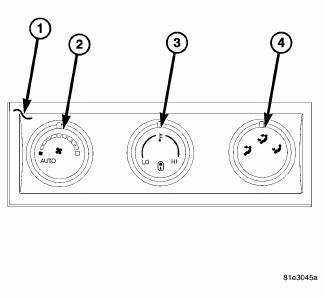
Fig. 24: ATC Tri Zone Rear Control
The rear A/C-heater control (1) contains:
- a rotary control knob for fan speed selection and turning the rear heating-A/C system off or to Auto mode (2)
- a rotary control knob for temperature control of the rear discharged air (3). An indicator lamp illuminates in the control when the rear heater-A/C controls are locked out by the driver or front seat passenger.
- a rotary control knob for mode control of the rear discharged air (4).
The rear A/C-heater control is a slave potentiometer to the front A/C-heater control and cannot be repaired and must be replaced if inoperative or damaged.
 Removal, Installation
Removal, Installation
REMOVAL
WARNING: Disable the airbag system before attempting any steering
wheel, steering
column, or instrument panel component diagnosis or service. Disconnect
and isolate the negat ...
See also:
PARKVIEW REAR BACK UP CAMERA — IF
EQUIPPED
Your vehicle may be equipped with the ParkView Rear
Back Up Camera that allows you to see an on-screen
image of the rear of your vehicle whenever the shift lever
is put into REVERSE. The image will ...
Connector, data link
DESCRIPTION
Fig. 1: Data Link Connector
The Data Link Connector (DLC) (2) is a 16-way molded plastic connector
insulator on a dedicated take out of
the instrument panel wire harness. This conne ...
Insulator, engine mount, right
Removal
Fig. 243: Belly Pan
1. Remove the belly pan (2).
Fig. 244: Right Engine Mount
2. Lower vehicle. Remove the load on the engine motor mounts by carefully
supporting the engine assembly ...

